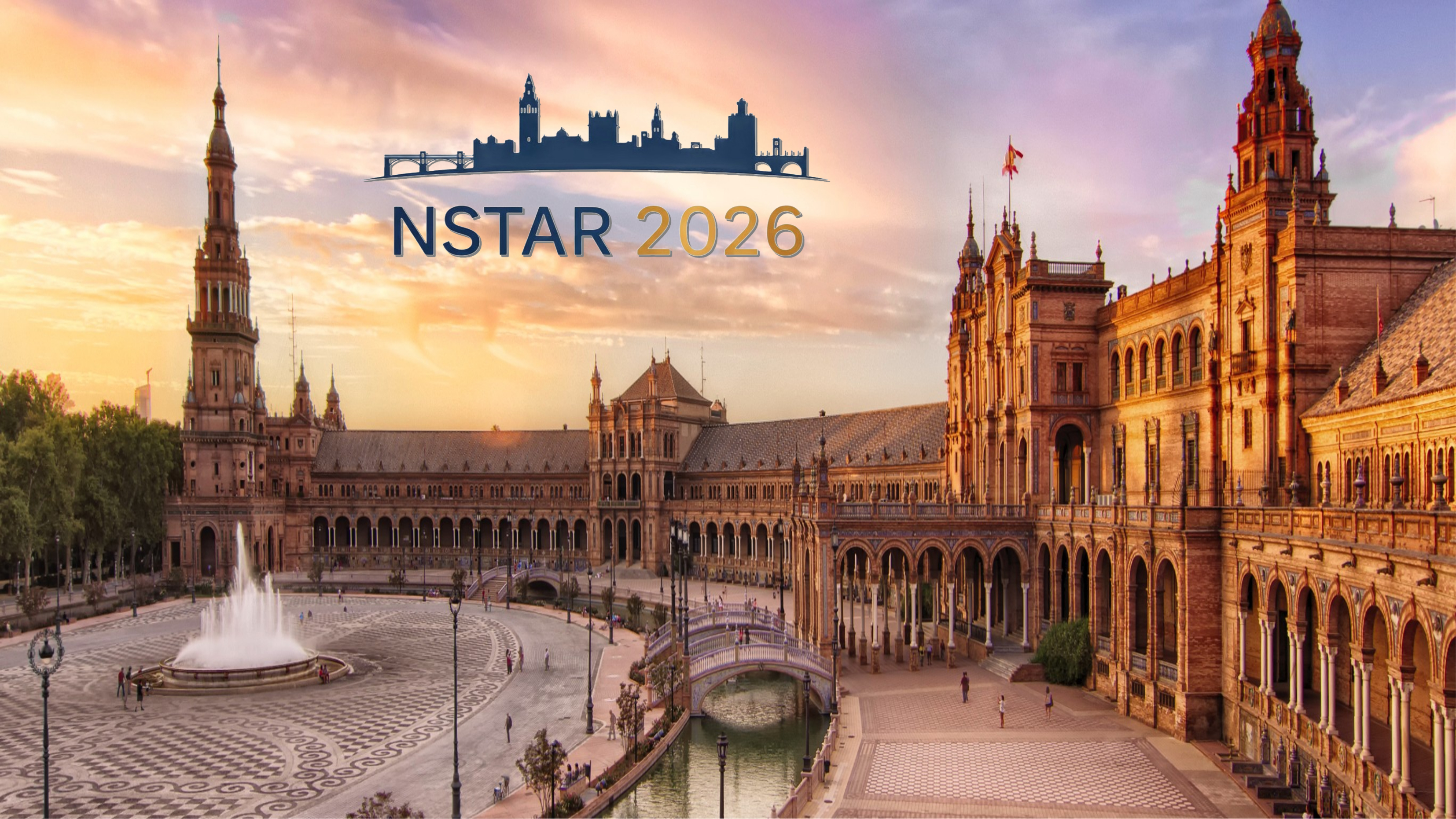NSTAR 2026
The 15th International Workshop on the Physics of Excited Nucleons will take place in Seville from September 7th to 11th, 2026.
Nucleon excitations are providing a unique opportunity to explore many facets of the non-perturbative strong interaction and how various baryons, including those with strange and heavy flavor content, emerge from Quantum Chromodynamics (QCD), the Poincaré invariant quantum non-Abelian gauge field theory that describes the strong-interaction part of the Standard Model of Particle Physics. The rapid growth of high-quality experimental results on exclusive meson photoproduction off nucleons from CLAS, ELSA, GRAAL, LEPS, and MAMI allow us to pin down reaction amplitudes with unprecedented precision and to establish the baryon spectrum with minimal model dependence. Experiments with hadronic beams (GSI, JPARC) and hadron production in e+e- collisions (BES) extend and complement the scope of baryon spectroscopy, where the importance of baryon states in the evolution of the Universe has also just recently been elucidated.
Space-like resonance electrocouplings can be extracted, based mainly on the CLAS data on exclusive meson electroproduction off nucleons, over a wide range of photon virtualities and provide valuable information on the excited nucleon structure by offering access to non-perturbative strong interaction mechanisms behind the N* generation. The insight into the baryon structure is complemented by the studies of time-like form factors (BABAR, BES, GSI, PANDA).
From the theory side, Dyson-Schwinger-Equations and Lattice-QCD functional approaches are remarkably progressing in describing the baryon spectrum and structure from the first principles of QCD. New opportunities to explore the full spectrum of excited nucleons, strange and heavy baryons as well as exotic multiquark structures in the baryon sector have been offered by advances in QCD-inspired quark models. In addition, effective field theories, such as chiral perturbation theory, provide valuable low-energy benchmarks and constraints that complement first-principle methods. Light-front holography and AdS/QCD models have opened alternative pathways to connect hadron spectroscopy with underlying QCD dynamics, while QCD sum rules continue to serve as a bridge between non-perturbative QCD and phenomenology. Moreover, coupled-channel dynamical models contribute providing essential insights into hadron scattering and decay properties. Taken together, this broad theoretical toolkit offers a comprehensive framework to deepen our understanding of baryon structure and spectrum.
Synergistic efforts between experimentalists and theorists have already demonstrated our capability to address some open key problems of hadron physics on the nature of hadron mass, quark-gluon confinement, dynamical chiral symmetry breaking, and their emergence from QCD. The purpose of this workshop is to share the latest results on various aspects of low-energy QCD dynamics in terms of nucleon excitations and baryon resonances, and to discuss the future developments.
Topics covered in the workshop are:
- Baryon spectrum through meson photoproduction.
- Baryon resonances in experiments with hadron beams and in the e+e- collisions.
- Baryon resonances in ion collisions and their role in cosmology.
- Baryon structure through meson electroproduction, transition form factors, and time-like form factors.
- Amplitude analyses and baryon parameter extraction.
- Baryon spectrum and structure from first principles of QCD.
- Advances in the modeling of baryon spectrum and structure.
- Facilities and future projects.
- Other topics related to N* physics.

